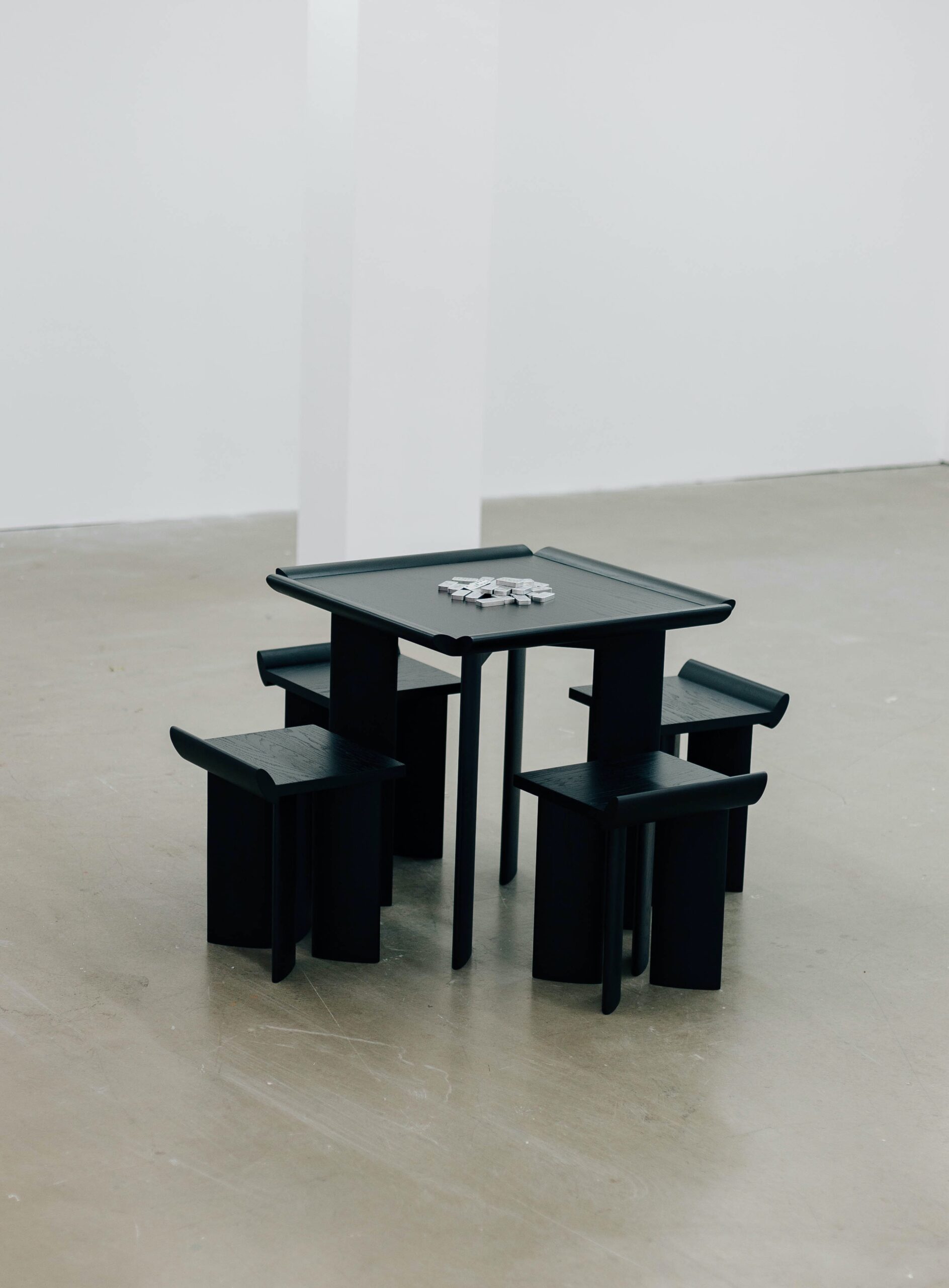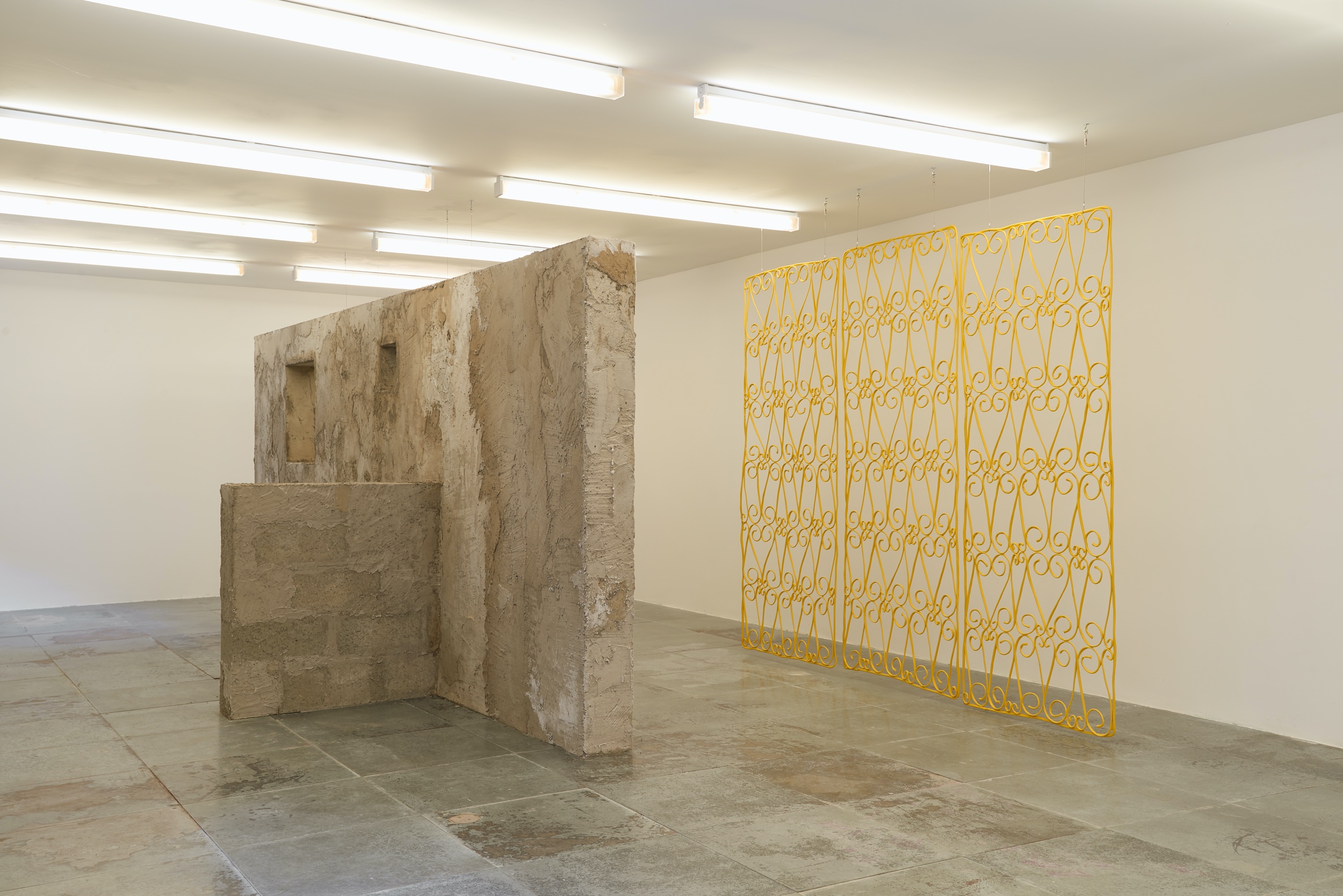The curators of this year’s British pavilion for the Venice Architecture Biennale are putting the public at the centre of the space – shifting the spotlight towards more informal placemaking by looking at the ways in which people use urban and domestic space through the everyday rituals followed by diaspora communities
 Photography courtesy of British Council
Photography courtesy of British Council
Words by Riya Patel
‘We’ve tried to stay away from using the word “architecture” anywhere in this process,’ says Sumitra Upham, one of four curators of the British pavilion for the 2023 Venice Architecture Biennale. Commissioned by the British Council, Upham, Jayden Ali, Joseph Henry and Meneesha Kellay’s pavilion considers more informal acts of placemaking connected to the rituals and social practices of Britain’s South Asian and Caribbean diasporic communities.
Ali is an architect and founder of east London practice JA Projects, Henry is a capital development manager at the Greater London Authority, Kellay is a senior curator in the contemporary department of the V&A Museum and Upham is head of programmes at the Crafts Council.
As practitioners, commissioners and curators of architecture, their concept for the pavilion comes from a common ground. ‘We share a view that the built environment doesn’t always reflect everybody who uses it,’ Upham says. ‘The pavilion is a way to shine a light on the ways everyday people, rather than architects or developers, impact urban and domestic space.’
 Photography courtesy of Olaniyi Studio featuring NONO : Soil Temple, 2022, Yussef Agbo-Ola
Photography courtesy of Olaniyi Studio featuring NONO : Soil Temple, 2022, Yussef Agbo-Ola
The examples include small acts of making space, such as an impromptu garden behind a block of flats in London’s Southall. Its instigator repurposes large plastic ghee and yoghurt tubs as planters for strains of chilli and coriander grown only in her native Bangladesh. At the other end of the scale is Carnival, a street celebration of Caribbean heritage which famously draws crowds and costumed performers to Notting Hill every year but also happens in locations across the UK.
The pavilion frames these individual and collective acts as ‘holding space’ for marginalised cultures: a form of resistance against the built environment. ‘Whether it be street processions or forms of worship, rituals are these powerful statements of human values,’ says Upham. ‘They are helpful ways of understanding how we occupy space.’
The pavilion will feature a film made of footage gathered through an open call. It aims to reach a wide geographic spread, with VHS tapes and smartphone videos presenting the personal view of cultural rituals around the UK. The film puts the public firmly at the centre of the space, rather than architects, who are usually the focus of this historic global gathering for the discipline.
 Photography by Megan Jepson featuring Open Code, 2022, Mac Collins
Photography by Megan Jepson featuring Open Code, 2022, Mac Collins
The democratic approach of this edition shows how far the Biennale has evolved from a congratulatory showcase of British architecture – in the past curated by high-profile names such as Zaha Hadid, Richard Rogers and Norman Foster – to a critical platform of debate guided by collectives with diverse viewpoints. All pavilions will respond to architect and academic Lesley Lokko’s theme for this edition, The Laboratory of the Future – a timely call for the profession to rethink its relevance and who it represents.
The curators have also looked beyond the profession in choosing collaborators to contribute works to the pavilion’s galleries, reminding us of the labour of architecture; that its production depends on the work of many hands. Kellay says: ‘Buildings are vessels for other activities to take place. We feel it’s crucial that architecture is influenced by other disciplines. And that it is not self-referential or an echo chamber just speaking to its own world.’
The multi-disciplinary Olaniyi Studio, furniture designer Mac Collins, ceramic artist Shawanda Corbett, Madhav Kidao of architecture, design and art studio Nebbia Works and artist Sandra Poulson have each been commissioned to make an object or fragment at the architectural scale. They share a ‘curiosity for making’, according to Upham. ‘We are interested in how rituals manifest through objects, making and materials. In certain diasporic cultures we observed an appreciation for materiality. And for lo-fi making,’ she says.
 Photography courtesy of the artist featuring Economy of the Dust, 2022, Sandra Poulson, V.O. Curations, London, installation view
Photography courtesy of the artist featuring Economy of the Dust, 2022, Sandra Poulson, V.O. Curations, London, installation view
In its themes and pluralistic approach, the project has echoes of the 2021 Serpentine Pavilion by Sumayya Vally and her Johannesburg-based practice Counterspace. That work was born of intense research on places of meeting and belonging for London’s diasporic communities, presenting itself as a conglomerate of architectural fragments from specific places.
It will be interesting to see how the British pavilion builds on this, what it has to say in contrast, and how it can expand its lens to the whole of the UK. Rather than produce a manifesto, the curators have worked in the spirit of testing and experimenting (as suggested by Lokko’s laboratory theme) to present an expanded vision of what UK architecture should be.
‘We’re not saying that buildings should necessarily look like the commissions that we’ve put in the pavilion,’ says Kellay. ‘We’re just trying to push at the edges of architecture a little bit. Encourage it to be more playful and open to discovering new ways of looking.’
Get a curated collection of design and architecture news in your inbox by signing up to our ICON Weekly newsletter

















